Why Sweaty Feet Are a Workplace Problem Brands Can’t Ignore
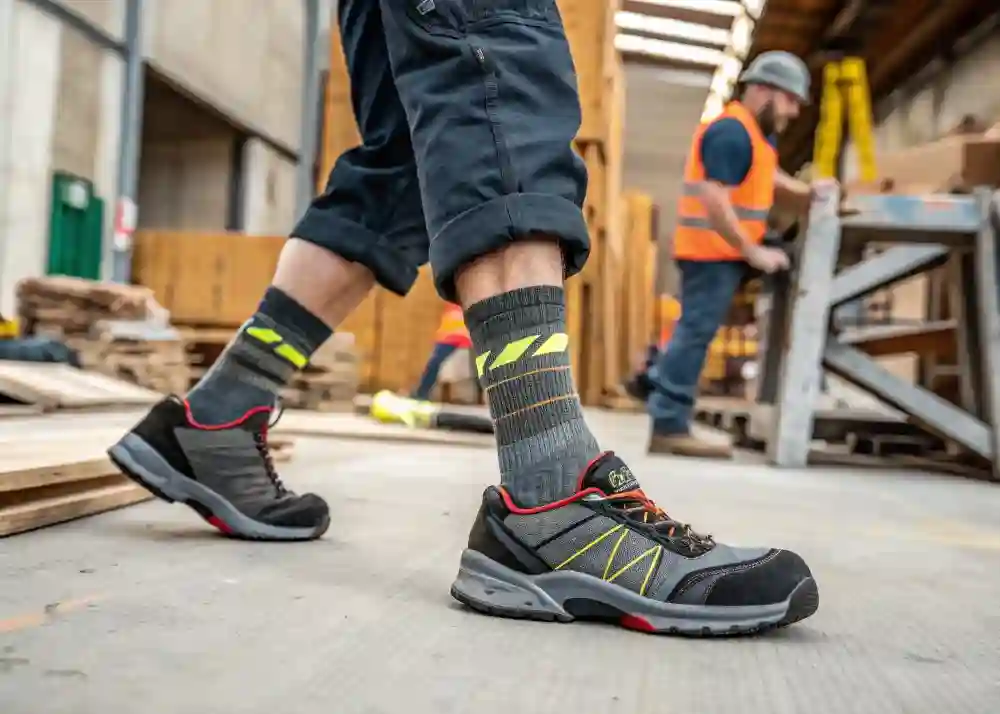
Sweaty feet—an all-too-common issue that plagues workers across industries. The constant dampness creates a breeding ground for bacteria, leading to unpleasant odors, skin irritation, and even blisters. These foot problems not only harm worker comfort but also affect their efficiency and well-being. For forward-thinking brands, this crisis births opportunity.
The Science Behind Sweaty Feet – What Retailers Need to Know
Foot sweat may seem like a minor inconvenience, but its impact on skin health and safety risks is substantial. When feet sweat, moisture builds up, creating an environment perfect for bacteria and fungi to flourish. This can lead to unpleasant odors and, more seriously, infections. The combination of excessive moisture and the pressure from work boots increases friction, causing blisters, calluses, and skin abrasions. These issues not only cause pain but can significantly affect mobility and performance.
Additionally, poor foot hygiene becomes a bigger concern. Uncontrolled moisture can create a breeding ground for bacteria, increasing the risk of fungal infections like athlete’s foot. By offering socks designed to wick away sweat, brands can mitigate these risks, improving overall foot health. The right socks reduce friction, prevent discomfort, and help regulate moisture. This not only combats foot odor but also contributes to a cleaner, safer work environment. With the right sock solution, retailers can help workers maintain proper hygiene, reduce health risks, and improve workplace comfort and productivity.
Must-Have Features in Work Socks for Sweaty Feet
Material Selection Secrets for Moisture Control
The material of work socks is essential in managing moisture. While cotton is a popular choice, it doesn’t perform well for sweaty feet. It absorbs moisture but doesn’t effectively wick it away, leaving feet damp, which leads to discomfort and irritation. For environments where comfort and dryness are critical, selecting the right fabric is key.
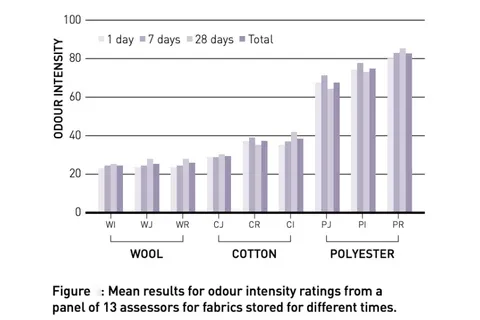
- Avoiding Cotton: Why Absorbency ≠ Performance
Cotton’s absorbency is often misunderstood. While it soaks up moisture, it doesn’t dry quickly, which results in wet, uncomfortable feet. This prolonged moisture exposure increases the risk of skin irritation, blisters, and even fungal infections. Cotton may feel soft, but it simply can’t compete with other fabrics in terms of moisture control and overall performance.
- Merino Wool Advantages: Natural Odor Resistance & Temperature Regulation
This material naturally absorbs moisture and wicks sweat, quickly drawing moisture away from feet and diffusing it for evaporation. It’s also antibacterial and deodorizing, reducing foot odor. This wool can hold up to 30% of its weight in moisture without feeling damp, keeping feet dry throughout the day. Its natural breathability and temperature-regulating properties make it perfect for a variety of work environments, helping to ensure comfort during both cold and warm conditions. - Synthetic Blends & Bamboo Fibers: Balancing Cost and Breathability
Synthetic blends and bamboo fibers offer a practical alternative that balances cost with breathability. Bamboo Fiber, known for its moisture-absorbing and quick-drying properties, bamboo fiber is highly breathable and naturally antibacterial, making it ideal for work socks. Synthetic Fiber, these improve quick-drying performance and durability, ideal for high-intensity activities. Blended Materials, combining wool with nylon or spandex offers a balance between comfort and wear resistance, making them suitable for both everyday use and demanding work environments. - Advanced Fabric Tech: Thorlon and High-Tech Moisture-Wicking Blends
In demanding work environments, high-performance fabrics like Thorlon and specialized moisture-wicking blends shine. Thorlon, a durable acrylic fiber, offers excellent moisture control and softness, while high-tech blends keep feet dry and comfortable for long shifts. These fabrics are designed to provide long-lasting performance, even under extreme conditions.
Sock Construction for Maximum Durability
Work socks must be durable enough to withstand tough conditions. Socks constructed with reinforced heel and toe areas provide extra durability in high-stress spots. This ensures that socks last longer, even in industrial environments, and continue to provide comfort and support throughout the day.
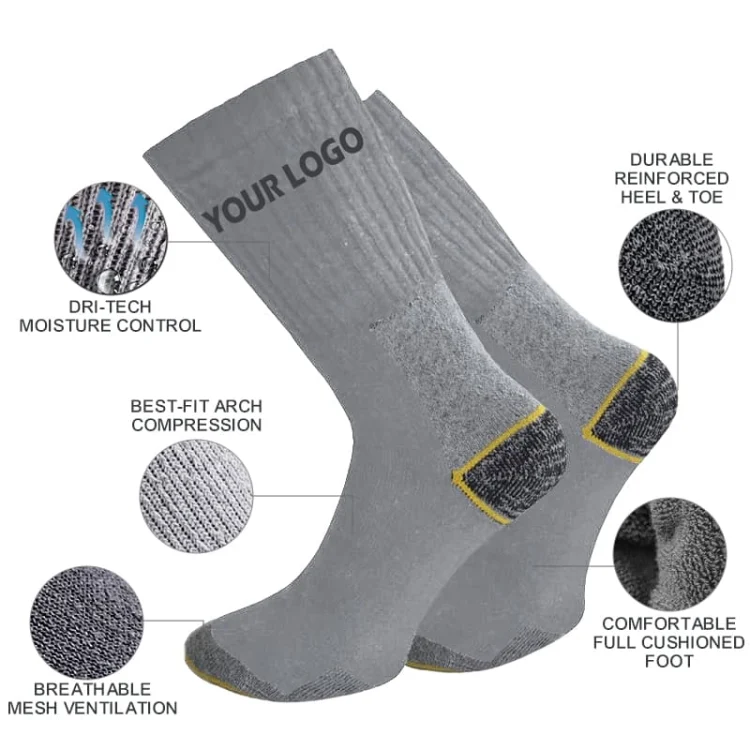
- Ventilation Holes/Breathable Structure
Socks with ventilation holes, designed on the instep or toes, enhance air circulation and help keep feet cool and dry. - Seamless Toe Designs to Eliminate Blister Risks
Seamless toe construction is critical to preventing blisters. Even small seams that rub against the skin can cause irritation, leading to discomfort and potential blisters. Seamless designs ensure a smoother fit, reducing friction and enhancing comfort for workers who spend long hours on their feet.
- Reinforced Heels and Toes for Industrial Work Environments
Reinforced heels and toes provide added protection in high-impact areas, making socks more durable and resistant to wear. This is particularly important for workers in demanding industrial environments, where extra reinforcement ensures longer-lasting comfort and protection, even after hours of use. - Anti-Slip Yarns and Compression Zones for Stability
Anti-slip yarns help keep socks in place, ensuring they don’t slide down during the day. Compression zones provide added support for the arches and ankles, promoting better circulation and reducing fatigue. This feature is especially beneficial for workers in physically demanding jobs, providing stability and reducing discomfort.
Style Adaptation for Diverse Work Scenarios
Selecting the right sock style for different work scenarios ensures maximum comfort and efficiency. From lightweight boat socks for running shoes to padded socks for heavy-duty boots, the right choice can make all the difference in performance.
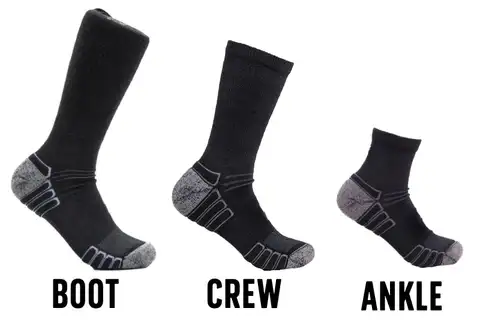
- Boat Socks vs. Mid-Calf Socks: Matching Sock Height to Footwear
Boat socks are ideal for lighter footwear, such as athletic shoes, offering comfort without excessive coverage. Mid-calf socks are better suited for work boots, providing extra coverage, warmth, and protection, which are important for keeping feet comfortable during long shifts. - Why Padded Socks Are Essential for Heavy-Duty Boots
Padded socks are essential for those wearing heavy-duty boots. The added cushioning reduces friction and pressure on the feet, providing comfort and helping to prevent blisters and other foot issues. These socks also absorb shock, reducing fatigue and increasing comfort for workers in physically demanding roles. - Compression Styles for Long Shifts and Swelling Prevention
Compression socks are vital for workers on their feet for long periods. They help to reduce swelling, enhance circulation, and provide targeted support to the lower legs and feet. This is particularly important for those in roles that require extended hours of standing or walking, ensuring they stay comfortable and productive throughout the day.
Retail Strategies: Marketing “Sweat-Proof” Socks to Buyers
- Packaging & Labeling Tricks to Highlight Moisture-Control Features
Packaging serves as the initial introduction to the product, so it’s crucial to emphasize the key benefits such as moisture-wicking, odor control, and breathability. Use eye-catching labels that mention these qualities clearly—terms like “odor-free” and “breathable fabric” can quickly communicate the value of the socks. Graphic icons representing these features can further enhance visual appeal. Packaging should not only inform but also reflect the durable and practical nature of the socks, ensuring customers recognize the importance of high-performance footgear for long workdays. - Bundling Work Socks with Safety Boots for Higher AOV
Increase the average order value (AOV) by bundling socks with safety boots or other protective footwear. By offering a discount when these items are purchased together, customers perceive added value, making it a win-win situation. This approach reinforces the idea of comprehensive foot protection—highlighting the socks as essential when paired with durable work boots. Bundling also speaks to business buyers who are looking for solutions that cover all aspects of worker safety and comfort in one purchase. - Educating End Customers: Free Guides, Videos, and In-Store Demos
Educating customers is a powerful way to increase trust and drive sales. Provide free guides, how-to videos, and blog posts explaining the benefits of socks designed to combat moisture and foot discomfort. These educational resources help buyers make informed decisions about the products they purchase. For in-store shoppers, consider offering live demonstrations where they can see firsthand the advantages of moisture-wicking and anti-odor features. These types of interactions build customer confidence and loyalty, ultimately leading to increased sales.
Customized Work Sock Solutions for Every Industry and Environment
When it comes to work socks, one size does not fit all. Custom solutions are crucial for ensuring that socks meet the specific demands of various working environments ( learn about industry-specific requirements in our comprehensive guide to custom work socks ). By tailoring materials and construction to the conditions your customers face, you can significantly enhance both comfort and performance.
Performance in Extreme Conditions
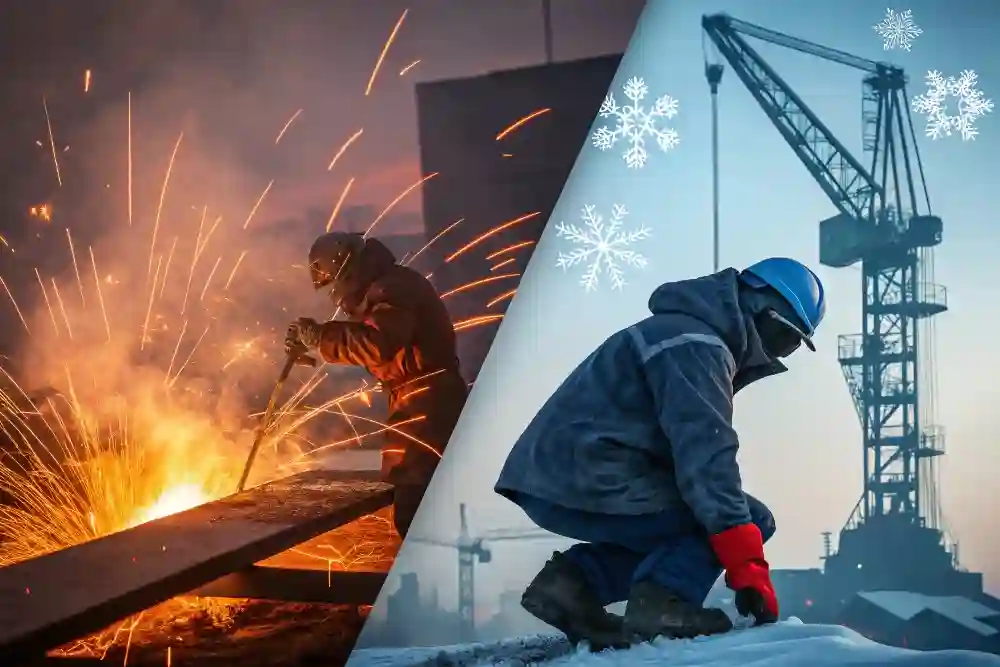
Work socks must endure tough conditions, whether it’s high heat, frigid temperatures, or physically demanding tasks. In extreme heat, natural moisture-wicking fibers, like merino wool and bamboo, help keep feet dry and cool, while high-tech synthetics, such as Coolmax, excel in rapid moisture evaporation. For cold environments, materials like wool or merino wool provide the warmth needed to prevent frostbite, while thickened soles and terry linings increase comfort. In humid conditions, quick-drying fibers such as nylon and polyester, combined with antimicrobial properties, ensure that feet stay dry and protected from infections.
For workers in physically demanding roles, abrasion-resistant fibers, such as Kevlar and carbon, offer durability, while elastic materials like spandex ensure flexibility and resilience. Reinforced seams and cushioned pads further reduce impact, making these socks ideal for high-intensity environments.
- Merino Wool Socks: Offering a lifetime warranty, these are ideal for outdoor and daily use due to their moisture-wicking and odor-resistant properties.
- Compression Socks: These help with moisture absorption and perspiration while promoting circulation, making them ideal for workers on their feet for long hours.
- Custom Blended Socks: Customizable in thickness and material, these socks can be tailored according to the specific requirements of an activity.
- Special Socks for Work Boots: These socks are designed for durability and moisture absorption, ideal for workers wearing heavy-duty footwear.
Functional Yarns for Added Benefits
To further enhance sock performance, many manufacturers are incorporating advanced yarns, like copper and graphene, to offer additional benefits. Copper-infused fibers provide excellent antibacterial and deodorizing properties, helping to reduce odors and prevent skin issues. Graphene, known for its thermal conductivity, is increasingly used in socks to regulate temperature and reduce foot discomfort. In high-risk industries, flame-retardant and anti-static yarns are becoming more popular, providing safety and durability when working near extreme temperatures or in environments where static electricity is a concern.
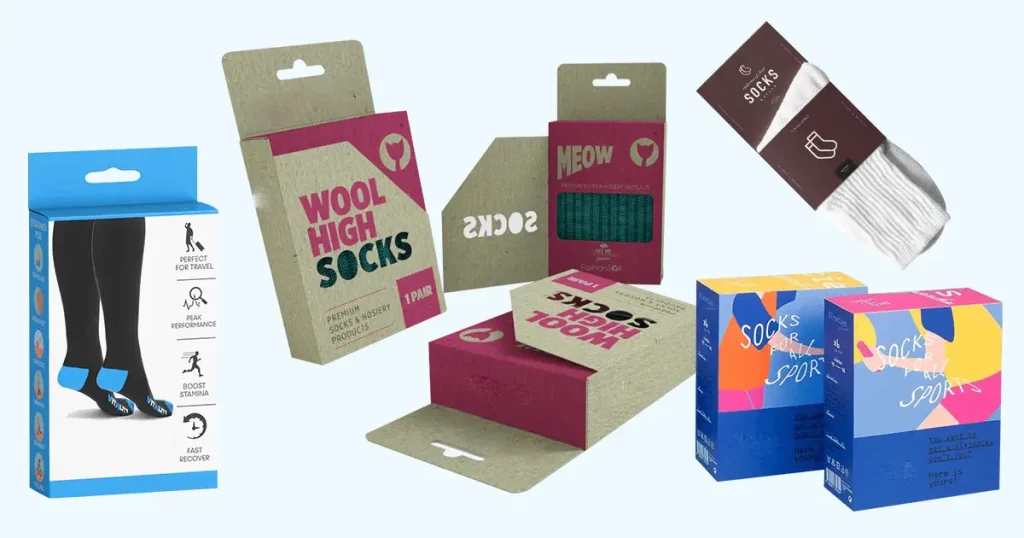
Customized Packaging and Design for Retail Success
Packaging is another critical area where customization adds value. Depending on your distribution channels—whether it’s retail stores, Amazon, or wholesale—you can opt for packaging solutions that cater to your specific needs. For example, retail outlets may require hang tags or display boxes, while Amazon sellers often prefer compact, lightweight packaging to minimize shipping costs. The ability to customize the packaging size, logo, and even the design ensures your brand stands out while providing a functional and cost-effective solution.
Flexibility in Sizes, Colors, and Lengths
Customization also extends to sizes, colors, and lengths. Offering a wide range of sock lengths, from ankle to thigh-high, ensures that you can cater to every type of job. Whether you’re targeting construction workers, healthcare professionals, or outdoor enthusiasts, having the right fit and style is crucial. Our design options include standard, custom patterns, and full brand integration with logo placement, all tailored to fit your brand’s identity.
Comprehensive Support for Your Custom Sock Orders
With a focus on customization, we also provide a full suite of support services, including a size reference guide for different markets, mockups for packaging design, and guidance on creating the perfect sock for your needs. Whether you are a small brand or a large retailer, our team is committed to delivering high-quality, functional products that meet your specific requirements.
Partnering with the Right Work Sock Manufacturer: A Checklist
- Certifications That Matter: OEKO-TEX, ISO, and Safety Standards
Certifications are pivotal in ensuring the quality and safety of your socks. Look for manufacturers with OEKO-TEX certification, which guarantees that socks are free from harmful chemicals and safe for all skin types, including sensitive skin. ISO certification reflects adherence to global standards, ensuring consistent product quality across all batches. For industries with strict safety and regulatory standards, such certifications help ensure that socks are not only comfortable but also compliant with necessary workplace guidelines. - Small vs. Bulk Orders: Finding Factories for Emerging vs. Enterprise Brands
The right supplier should be able to accommodate your order size, whether you’re a small business just starting out or an enterprise with large-scale needs. Smaller brands may prioritize flexibility, seeking manufacturers who can work with smaller minimum order quantities (MOQs) while maintaining quality. Larger businesses, on the other hand, require manufacturers with the capacity for bulk production, fast turnarounds, and consistent quality across high volumes. - Prototyping Secrets for Custom-Fit Socks (Size Charts, Material Testing)
Prototyping plays a key role in the custom sock development process. A reliable manufacturer will offer detailed size charts to ensure proper fit and provide material testing to confirm the socks perform as expected in real-world work environments. This phase of development helps test factors like moisture-wicking, durability, and comfort. Testing raw materials like wool, bamboo fibers, or synthetic blends ensures your socks will meet your specific performance needs, even before the full-scale production begins. - Ethical Manufacturing: Why Transparency Boosts B2B Trust
In today’s B2B landscape, ethical manufacturing practices foster trust and long-term relationships. Transparency about labor conditions, material sourcing, and environmental practices ensures your brand aligns with consumer values. Opt for manufacturers who share their ethical guidelines, including fair labor practices and sustainable sourcing of materials like organic cotton or bamboo fiber. Not only does this bolster your reputation, but it also appeals to consumers demanding ethically made products. - Product Durability: Quality Testing and Reporting
Durability is a key consideration in work socks. A dependable manufacturer will offer comprehensive quality tests, ensuring the socks withstand frequent use without losing their shape, comfort, or functionality. Detailed reports on colorfastness, tensile strength, and abrasion resistance offer transparency and assurance that the final product can meet customer expectations over time. - QC Production Inspection: Ensuring Consistency Across Every Pair
A trustworthy manufacturer will implement strict quality control at every stage of production. From initial inspections after knitting to final checks before packing, every pair of socks should undergo thorough scrutiny. This includes checking for defects, ensuring proper sizing and pairing, and conducting AQL (Acceptable Quality Level) inspections to catch potential issues early. For e-commerce sellers, such as those on Amazon, ensuring accurate barcode scanning and proper labeling is another essential step in ensuring smooth logistics and order accuracy.
Purchase Suggestions for Your Customers
- Moisture Absorption and Perspiration: When selecting socks, prioritize materials like wool, bamboo fiber, or Coolmax blends, which excel in moisture control.
- Structural Design: Pay attention to design features like breathable holes, seamless stitching, and reinforced areas to enhance comfort and durability.
- Scene Adaptation: Choose socks with the appropriate thickness and functions for different activities, such as daily use, sports, or work environments.
- Brand Trust: Opt for brands that offer clear material descriptions and lifetime warranties for peace of mind and product reliability.
Care & Replacement Guidelines
- Washing Guidelines for Merino Wool
Merino wool is an excellent material for work socks due to its natural moisture-wicking and antibacterial properties, but it requires special care. Many customers are unaware that merino wool needs to be washed in cold water to preserve its fibers. Brands should provide clear washing instructions to prevent shrinkage, fabric damage, and loss of softness. Including a care guide on packaging or in product descriptions can extend the lifespan of the socks and improve customer satisfaction. - 6–12 Month Replacement Cycles
A significant factor in customer retention is how long the socks last before needing replacement. Work socks are subject to heavy wear, and a lifespan of 6 to 12 months is typical. Brands that do not address sock durability or communicate how to properly care for socks may see increased returns or dissatisfied customers. By educating consumers about replacement cycles and the importance of high-quality materials, brands can build stronger customer loyalty. Offering replacement discounts or reminders at the appropriate time also helps maintain brand engagement and repeat sales.
FAQs
Why is moisture-wicking technology important for work socks?
Moisture-wicking fabrics like Coolmax or Merino wool help reduce sweating and moisture buildup, preventing foot odor, bacterial growth, and discomfort during long hours on the job.
What materials are best for moisture-wicking in work socks?
Materials like Merino wool, bamboo fiber, and high-tech synthetics such as Coolmax are excellent at wicking moisture away from the feet, keeping them dry and comfortable during long shifts.
How can brands customize their work socks to improve employee comfort?
Brands can customize sock thickness, padding, and fit to enhance comfort for specific work environments. Adding features like arch support, reinforced heels, and anti-slip technology can also boost overall performance.
Are there eco-friendly options for work socks?
Yes, brands can opt for sustainable materials like organic cotton, bamboo, and recycled fibers, as well as incorporate OEKO-TEX certified fabrics to meet eco-conscious customer demands.
Are there work socks designed specifically for hazardous environments?
Yes, socks made with flame-retardant, anti-static, or reflective yarn are perfect for industries such as construction, welding, and electrical work. These socks provide protection against fire hazards, static buildup, and improve visibility in low-light conditions.
Conclusion
In summary, creating high-quality work socks involves understanding your target market’s needs, selecting the right materials, and offering tailored solutions for various work environments. By focusing on the performance, durability, and comfort of your products, you can enhance brand loyalty and customer satisfaction. Customization is key, whether it’s adjusting sock height, adding branding, or choosing specific fibers for different conditions. Avoiding common mistakes in material choices and design will help set your brand apart and boost long-term success.
Ready to take your work sock brand to the next level? Contact us today to explore customized solutions tailored to your needs. Let’s build something great together!
